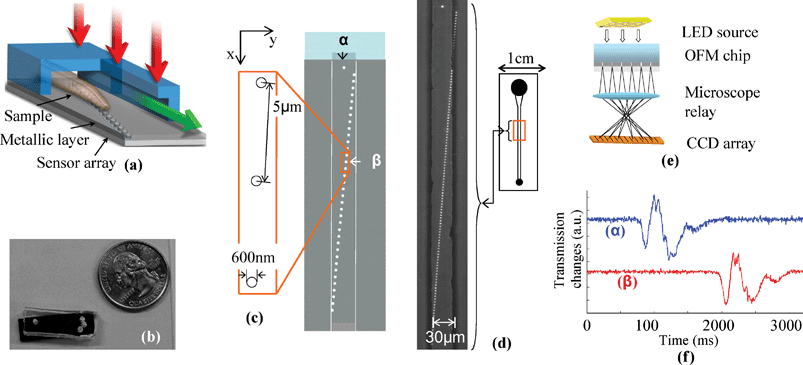

Fig. 1 (a) Architecture of the optofluidic microscope (OFM); set of three arrows: illumination; single arrow: flow direction. (b) Photograph of the OFM prototype compared with a U.S. quarter. The actual nanoaperture array is 600 µm long. (c) The top view of the OFM; denotes the isolated aperture; denotes the corresponding aperture, as explained in the text. (d) Photograph of the orientation of the aperture array with respect to the channel. (e) Experimental scheme for the OFM prototype. (f) Transmission time traces from aperture and associated with the transition of a C. elegans.
DC artist, programmer, and Dorkbot DC co-overlord Alberto Gaitán tells MAKE:
The Proceedings of the National Academy of Sciences recently published research inspired by eye floaters in “Lensless high-resolution on-chip optofluidic microscopes for Caenorhabditis elegans and cell imaging” by CalTech’s Xiquan Cui, Lap Man Lee, et al. And as if cheap (~$10), portable, on-chip, lensless, hi-res microscopy for developing countries’ infectious disease management wasn’t promising enough, it also holds promise for backyard microscopists and mobile-device-mounted passive sensorwebs for biohazard detection. No telling what cool hacks await if it becomes available through Digikey!
Lensless high-resolution on-chip optofluidic microscopes for Caenorhabditis elegans and cell imaging
New Micro-Microscope Is Portable And Cheap [NPR piece on the technology]
ADVERTISEMENT





